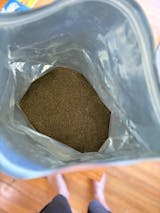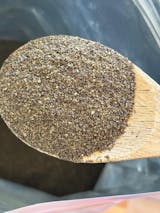Construction and environmental sustainability are often caught butting heads. On one hand, we need construction to build essential infrastructure. But on the other hand, reducing our environmental footprint is one of the biggest challenges we face today.
But what if there were a way that the two could meet in the middle?
Hempcrete is a natural building material made from hemp. And it’s not just a tree-hugging thing that you’d find in an off-grid-living magazine. It’s incredibly feasible. Think: eco-friendly, carbon-negative, durable, lightweight, breathable and a strong insulator. But most of all, it has enormous potential to revolutionise an environmentally harmful (but all-important) industry.
Can we build our way to a greener future?
Hempcrete – also known as hemp building materials or hemp masonry – is made from hemp fibres, lime and water. It’s not a new development, either. Hempcrete has been used for centuries throughout Europe (and stood the test of time, too).
It has an earthy, contemporary appearance, boasting organic colours and natural textures. But beyond its striking form, hempcrete’s life cycle is hard to fault. From the farm to your home - let’s take a closer look.
Hemp farming
Hemp is one of those rare, incredible plants that when farmed and harvested, it leaves the soil in better condition. It regenerates and ‘cleans’ the soil, adding nutrients rather than stripping them. What’s more, one hectare of industrial hemp can absorb up to 15 tonnes of CO2, acting as a carbon sink. Hemp is also fast growing, without the need for herbicides and pesticides, and requires little water if the climate is right. Does it get better than that?
Hemp processing
Hemp is processed by collecting the hemp “hurd” (woody compounds found inside the stem), and then the lime and water act as a binding agent. It’s commonly used as an insulator, prefabricated panels for walls, a finishing plaster, cabinets and countertops. Creating hempcrete is a low energy process, with no heating required. The only costs involved are associated with running the shedders and crushers. And if you’re looking to shop local, there are a growing number of processing plants right here in Australia.
Your hemp home
The advantages of a hemp house are second to none. Here are some of our favourite features:
Building a hemp house in Australia
More often than not, there’s bad news concerning environmental sustainability and climate. But amidst all the doom and gloom we find hempcrete – a material that’s promising, practical and beautiful in equal measure.
More and more building companies are discovering its worth, and we can only hope that this is the start of something big.







